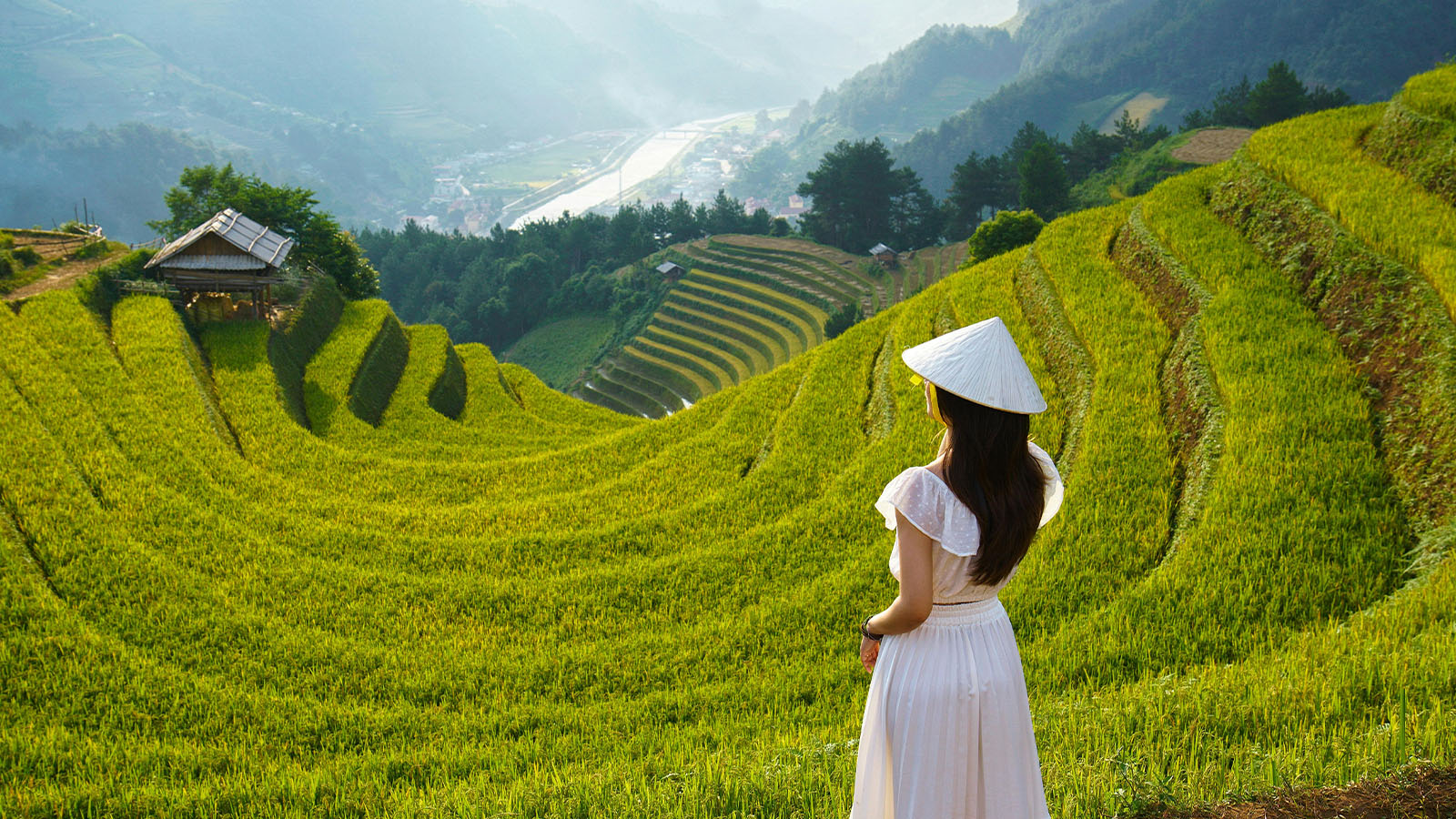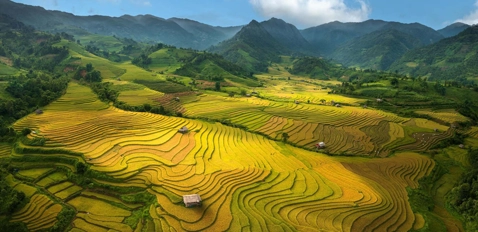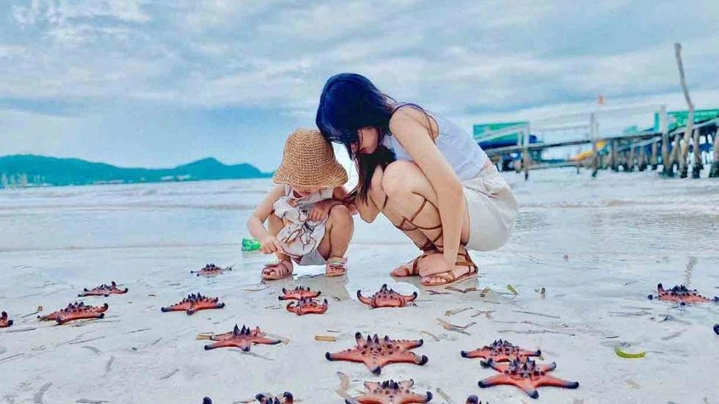Myanmar Travel Guide : A Useful Guide Book For Your Successful Trip
Myanmar, formerly known as Burma, is a Southeast Asian nation rich in cultural heritage and natural beauty. From the ancient temples of Bagan to the serene waters of Inle Lake, Myanmar offers travelers a unique and immersive experience. However, the country has faced significant challenges in recent years, including political unrest and human rights concerns following the military coup in February 2021. Despite these struggles, Myanmar's allure remains strong for those seeking authentic cultural encounters and breathtaking landscapes. This Myanmar travel guide aims to provide comprehensive information to help you navigate your journey, covering essential aspects such as entry requirements, optimal travel times, must-visit destinations, transportation options, accommodation recommendations, and cultural insights.
What To Know Before Visiting Myanmar
Myanmar is a country in Southeast Asia that still feels like a hidden gem compared to its neighbors. If you're looking for a destination where ancient traditions blend with beautiful landscapes, Myanmar might surprise you. Traveling here gives you the chance to discover golden pagodas, lush nature, and warm local hospitality. Before you pack your bags, here's what you need to know.
Where is Myanmar?
Myanmar, also known as Burma, sits between Thailand, Laos, China, India, and Bangladesh. Its location makes it a cultural melting pot with influences from different regions. The capital city is Naypyidaw, but most travelers spend more time in Yangon or Mandalay, which are larger and more lively cities. Yangon is the biggest city, famous for its colonial architecture and the Shwedagon Pagoda—one of the most important religious sites in the country.
Time zone
Myanmar follows Myanmar Time (MMT), which is GMT+6:30. This means it's 4.5 hours ahead of Europe and around 3.5 hours behind Australia. The time zone might feel a little unusual, but it's easy to get used to.
Language
The official language in Myanmar is Burmese. Not many people speak English, especially in rural areas, but you'll find English speakers in hotels, restaurants, and popular tourist places. Learning a few basic phrases like “Mingalabar” (Hello) or “Je zu tin ba de” (Thank you) can make your trip more enjoyable.
Currency
The local currency is the Burmese Kyat (MMK). However, US dollars are widely accepted in hotels and for tours. Credit cards are becoming more common in big cities, but it's always better to carry cash, especially in smaller towns. One Australian dollar is roughly around 2,000 Kyat, but exchange rates can change.
Topography And What The Country Offers
Myanmar’s landscapes are incredibly diverse. You can explore temple-studded plains in Bagan, mountain villages in Shan State, tropical beaches in Ngapali, and the lush Inle Lake region. The country is perfect for both nature lovers and culture seekers. One day, you can be trekking through green hills, and the next, admiring centuries-old pagodas at sunset.
Is Myanmar dangerous for tourists?
Myanmar is currently experiencing significant political instability and civil unrest following the military takeover in February 2021. This has led to widespread armed conflict and a deteriorating humanitarian situation. As a result, many governments, including the United States and Australia, have issued advisories against all travel to Myanmar due to safety concerns.
While some urban areas like Yangon and Mandalay have been considered relatively safe, the security situation remains unpredictable and can change rapidly.
Beyond safety considerations, it's important to be aware of the ongoing humanitarian crisis in Myanmar. The country has seen a significant increase in internal displacement, with millions in need of assistance. The conflict has deprived many communities of basic needs and access to essential services.
We encourage potential travelers to educate themselves about the current situation in Myanmar. Supporting reputable humanitarian organizations working on the ground can make a meaningful difference in the lives of those affected by the crisis.
How to get to Myanmar
What Do You Need to Enter Myanmar?
To enter Myanmar, you need:
- A Passport: Your passport must be valid for at least six months from the date of arrival.
- Visa: Most travelers need a visa to visit Myanmar. You can apply for an e-visa online, which is the easiest option. The e-visa is valid for 28 days for tourism purposes and costs around 50 USD. You can apply through the official Myanmar e-visa website.
- Return Ticket: Sometimes, immigration officers ask to see proof of your onward journey, so it's better to have your return or onward flight ticket ready.
- Travel Insurance: It's not mandatory, but we recommend having travel insurance that covers medical expenses and cancellations.
How to Get to Myanmar
The easiest way to reach Myanmar is by plane. The country has three international airports:
- Yangon International Airport (RGN): The main gateway, with flights from Bangkok, Singapore, Kuala Lumpur, and other major cities.
- Mandalay International Airport (MDL): A smaller airport but convenient if you're heading straight to central Myanmar.
- Naypyidaw International Airport (NYT): The airport serves the capital city, but not many international flights land here.
Best time to visit Myanmar
Myanmar has a tropical climate with three main seasons. The best time to visit depends on what kind of trip you're planning.
Cool Season (November–February)
This is the best time to visit Myanmar. The weather is dry, with temperatures ranging from 20°C to 30°C.
It's the perfect season to explore Bagan's temples, cruise on Inle Lake, or relax on Ngapali Beach.
This period is also the busiest, so we recommend booking flights and hotels in advance.
Hot Season (March–May)
Temperatures can rise to 40°C, especially in Mandalay and Bagan.
It’s a great time to visit the cooler regions like Inle Lake and Shan State.
If you don't mind the heat, you'll find fewer crowds and better prices.
Rainy Season (June–October)
The monsoon season brings heavy rains, especially in the south and along the coast.
Travel can be more challenging, but places like Bagan and Mandalay receive less rain and remain accessible.
If you're looking for lush green landscapes and don't mind some rain, this is a peaceful and beautiful time to visit.
We recommend visiting Myanmar between November and February for the most pleasant weather and the best travel experience. However, each season has its own charm, especially if you're looking for fewer tourists and lower prices.
Best things to do in Myanmar
Yangon—The Cultural Heart
Yangon is Myanmar's largest city and former capital. It blends colonial architecture, modern life, and ancient traditions.
What to See
Shwedagon Pagoda: The most famous landmark in Myanmar. This golden stupa is over 2,500 years old and shines brightly at sunset.
Sule Pagoda: Located in the heart of the city, it’s a great spot to learn about the city's history.
Bogyoke Aung San Market: A lively market where you can buy local handicrafts, jewelry, and clothes.
What to Eat
Mohinga (rice noodle soup with fish)—Myanmar’s national dish.
Tea Leaf Salad—A refreshing mix of fermented tea leaves, peanuts, and garlic.
Bagan—The Land of Temples
Bagan is one of the most magical places in Southeast Asia. It's home to thousands of ancient temples spread across a plain along the Irrawaddy River.
What to See
Ananda Temple: One of the most beautiful temples in Bagan.
Shwesandaw Pagoda: A great spot to watch the sunrise or sunset.
Hot Air Balloon Ride: See the entire landscape from above during sunrise – it's a once-in-a-lifetime experience.
What to Eat
Shan Noodles—A delicious noodle dish with chicken or pork.
Coconut Rice with Curry—A simple but tasty meal often served in local teahouses.
Mandalay—The Royal City
Mandalay is Myanmar's second-largest city and the cultural heart of the country.
What to See
Mandalay Hill: Climb up for stunning views over the city at sunset.
U Bein Bridge: The longest teakwood bridge in the world, best visited at sunrise or sunset.
Mingun Pagoda: An unfinished giant pagoda with breathtaking views of the Irrawaddy River.
What to Eat
Mandalay Mee Shay—Rice noodles with pork or chicken and a rich tomato sauce.
Mont Lin Ma Yar—A local street snack made of rice flour, eggs, and spring onions.
Inle Lake—Peaceful Water Life
Inle Lake is one of the most beautiful places in Myanmar. The floating villages, markets, and gardens make this destination truly unique.
What to See
Boat Tour: Visit floating villages and see the famous leg-rowing fishermen.
Phaung Daw Oo Pagoda: The most important religious site on the lake.
Local Workshops: Watch how lotus silk, cigars, and silverware are made.
What to Eat
Inle Fish Curry—Fresh fish from the lake served with vegetables.
Tomato Salad—A refreshing dish made with locally grown tomatoes.
Ngapali Beach—Tropical Paradise
If you're looking for relaxation, Ngapali Beach is the perfect place. It’s one of the most beautiful beaches in Southeast Asia.
What to See
White Sand Beaches: Relax under palm trees and swim in crystal-clear waters.
Boat Tours: Explore nearby islands and go snorkeling.
Fishing Villages: Meet local fishermen and learn about their daily life.
What to Eat
Grilled Seafood—Fresh fish, prawns, and squid served with spicy dipping sauce.
Coconut Curry—A flavorful dish with fish or shrimp.
Golden Rock—Sacred Pilgrimage Site
Golden Rock (Kyaiktiyo Pagoda) is a unique and sacred site for Buddhists. The golden boulder seems to balance on the edge of a cliff.
What to See
Golden Rock: The main attraction, especially at sunset.
Pilgrim’s Path: Walk alongside local pilgrims on the way up to the rock.
Hpa-An—Limestone Landscapes
Hpa-An is a small town surrounded by stunning limestone mountains and caves.
What to See
Kyauk Kalap Monastery: A pagoda perched on top of a rock formation.
Sadan Cave: A huge cave filled with Buddha statues and beautiful stalactites.
Mount Zwegabin: A scenic hike with breathtaking views.
Pyin Oo Lwin—Colonial Charm
Pyin Oo Lwin is a former British hill station with cool weather and colonial architecture.
What to See
National Kandawgyi Gardens: A botanical garden with beautiful flowers and lakes.
Anisakan Waterfall: A stunning waterfall just outside the town.
Colonial Buildings: Explore old British mansions and churches.
Mrauk U—Hidden Temples
Mrauk U is often called the "second Bagan," but with fewer tourists.
What to See
Shittaung Pagoda: Known for its intricate carvings.
Koe Thaung Temple: The largest temple in Mrauk U with over 90,000 Buddha images.
Kalaw—Trekking Paradise
Kalaw is the starting point for treks to Inle Lake.
What to See
Trekking Tours: Walk through villages and tea plantations.
Green Hill Valley Elephant Camp: A conservation project where you can interact with elephants.
Getting around Myanmar
Domestic Flights
Flying is the quickest way to cover long distances in Myanmar. It's a good option if you're traveling between major cities or remote areas.
Popular Routes: Yangon to Bagan, Mandalay to Inle Lake, Yangon to Ngapali Beach
Airlines: Myanmar National Airlines, Air KBZ, MAI (Myanmar Airways International)
Buses and Minibuses
Buses are the most common way to travel between cities. They are cheap, reliable, and available almost everywhere.
Types of Buses: VIP Buses: Comfortable with air conditioning and snacks (JJ Express and Elite Express); Standard Buses: Cheaper but less comfortable.
Popular Routes: Yangon to Bagan (9-10 hours), Mandalay to Inle Lake (7-8 hours), Yangon to Ngapali Beach (12-14 hours)
Tip: Choose VIP buses for long journeys.
Trains
Myanmar’s train system is slow, but it's a scenic way to see the countryside.
Popular Routes: Yangon to Mandalay (15-16 hours), Mandalay to Hsipaw (famous for the Gokteik Viaduct), Yangon to Bagan (17 hours)
Boats and Ferries
If you're traveling along the Irrawaddy River, boats offer a peaceful and scenic journey.
Popular Routes: Mandalay to Bagan (8-12 hours), Inle Lake boat tours, Ngapali Beach boat trips
Tip: Choose express boats for faster journeys.
Taxis and Ride-Sharing Apps
In big cities like Yangon and Mandalay, taxis are the easiest way to get around. You can use apps like Grab to book a ride.
Tip: Always agree on the price before getting into a taxi if you're not using an app.
Motorbikes and Bicycles
In smaller towns like Bagan and Hpa-An, renting a motorbike or bicycle is a great way to explore.
Electric bikes: popular in Bagan for temple-hopping.
Bicycles: perfect for exploring Inle Lake or Mandalay.
Tip: Always check the brakes and lights before renting.
Private Cars with Drivers
If you prefer comfort and flexibility, you can hire a car with a driver for your whole trip or day tours.
Where To Stay In Myanmar
Yangon
Luxury: The Strand Hotel (colonial charm and top service)
Mid-Range: The Loft Hotel (boutique hotel with a pool)
Budget: Little Yangon Hostel
Bagan
Luxury: Aureum Palace Hotel (with views of the temples)
Mid-Range: Bagan Thande Hotel (riverside with traditional wooden rooms)
Budget: Ostello Bello Bagan (popular with backpackers)
Mandalay
Luxury: Mingalar Mandalay
Mid-Range: Hotel Yadanarbon (great value with rooftop pool)
Budget: Mansion Hostel Mandalay
Inle Lake
Luxury: Sanctum Inle Resort (beautiful lakeside villas)
Mid-Range: Inle Resort & Spa
Budget: Song of Travel Hostel
Ngapali Beach
Luxury: Aureum Palace Hotel & Resort
Mid-Range: Bayview—the beach resort
Budget: Pleasant View Resort
Final thoughts
Embarking on a journey through Myanmar can be a profoundly enriching experience, offering insights into a culture that has remained relatively untouched by rapid modernization. However, it's crucial to stay informed about the current political and social climate to ensure a safe and respectful visit. Engaging with local communities, supporting ethical tourism initiatives, and choosing accommodations and services that benefit local populations can contribute positively to the country's development. As you plan your trip using this Myanmar travel guide, remember that responsible tourism not only enriches your experience but also supports the resilience and growth of the communities you encounter.
Send us your comments about : Myanmar Travel Guide : A Useful Guide Book For Your Successful Trip
Required fields *
You might also be interested
Travel ideas
Need some inspiration? Discover some of the best tours in Vietnam, which are highly appreciated by our clients. An excellent starting point to help you choose the right trip to Vietnam, Laos, Cambodia, Burma or Thailand, whether you are traveling alone, as a couple, as a family or with friends.
And because this trip is yours, feel free to customize it as you wish!
Vietnam Cambodia Itinerary 14 Days
Hanoi – Hoa Binh – Mai Chau – Ninh Binh – Halong bay – Hue - Danang – Hoian – Saigon – Ben Tre - Can Tho – Saigon - Siem Reap Angkor - Tonlé Sap - Siem Reap – Ta Prohm - Departure
Vietnam 14 Day Itinerary
Vietnam 14-day itinerary covers the country’s top highlights and quintessential experiences for an unforgettable journey.
Honeymoon Tour Pakcages In Vietnam 12 Days
Saigon Arrival - City Tour – Mekong Delta – Danang – Hoian - by flight - Da Nang – Hanoi - by flight – Halong - overnight on junk – Departure
Authentic Hoang Su Phi Trekking Tours
Hoang Su Phi trekking tours take you to stunning terraces, meet few tourists, connect with locals and enjoy authentic culture.
Best Nha Trang Beach Tour 4 Days
Saigon/Hanoi – Nha Trang relaxation – Saigon/Hanoi – Departure
Mekong Delta Bike Tour Itinerary 7 Days
Cycle through the Mekong Delta in 7 days, discovering floating markets, orchards, craft villages, and tranquil green islands.
Are you interested in this tour?



























Comment